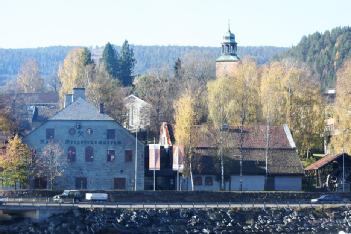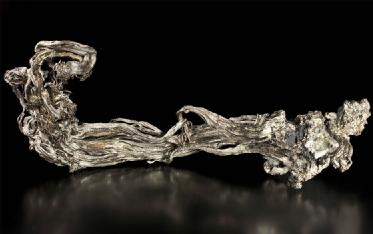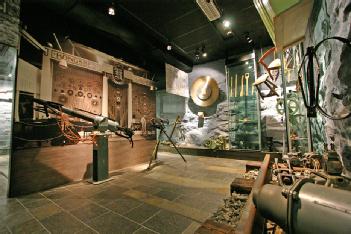
Norsk Bergverksmuseum |
3616 Kongsberg, Norway |
|
| Address |
Hyttegata 3
|
| Floor area | unfortunately not known yet |
Heritage- or City Museum
- Mining
- Arms
|
Opening times
|
02.01. – 16.05. Tuesday – Sunday 12.00-16.00 18.05. – 26.08. Every day 10.00-17.00 28.08. – 23.12. Tuesday – Sunday 12.00 – 16.00 |
||||
|
Status from 12/2018
|
Adult: kr 90; Student/Senior: kr 70; Child: kr 50 | ||||
| Contact |
|
||||
| Homepage | norsk-bergverksmuseum.no | ||||
| Location / Directions |
THE NORWEGIAN MINING MUSEUM is located in Kongsberg town, a 10 min walk from Kongsberg Train station. From Oslo it take around 1 hour drive. Follow E134 from Drammen in the direction Notodden. |
|||
| Location / Directions (other) |
Norsk Bergverksmuseum ligger i Kongsberg sentrum, i nærheten av Kongsberg kirke og med ca. 10 min gange fra Kongsberg togstasjon.
Fra Oslo tar det litt over 1 time. Følg E134 fra Drammen retning Notodden. |
|||
| Description | The exhibitions of the Mining Museum are installed in the silver smeltery from 1844, where silver was produced until 1922. The museum opened in 1945 and is today a national museum for mining. Main topics are the history of the Kongsberg Silver Mines (1623–1958) and the Royal Mint, and the history of industry and ski jumping in Kongsberg. The silver and minerals collection was founded in 1841 and the Silver Mines participated in World Exhibitions from the first one in London 1851. The Collections from Kongsberg Silvermines document the development of mining through the 335 years the Silvermines in Kongsberg were in operation. The main attraction is the silver and mineral collection which was created after the royal resolution of 15 March 1841. Today the Norwegian Mining Museum hosts the largest collection of native silver in the world. The Silver Collection consist of approx. 1500 specimens. The silver and mineralcollection holds a high international standard, and is the biggest collection in the world of native silver. The Norwegian Mining and Mineral Collections include objects, maps, drawings, photographies and archive material. This is mainly material from the Silvermines in Kongsberg, but also from mining heritage sites in Norway such as Skorovas mines, Knaben molybdenium mines and Bleka gold mines. The material range from the 1500’s until today, but mainly from pre-industrial time.The exhibition gives an overview of the diversity of mining in Norway. Here you can find emeralds, rubies and ½ kg goldnuggets, along with other Norwegian gems, minerals and ores. Kongsberg Industry Collections includes the exhibit of Kongsberg Våpenfabrikk (Kongsberg arms factory) which illustrates the development from the establishment of the industry in 1814 through to the hi-Tech companies of today. The Kongsberg weapons factory was established as a consequence of the temporary shut-down in the mines from 1805. Here you will learn about the development of the Krag-Jørgensen rifle at the end of the 19th century which would later lay the foundation for a modern industrial company in Kongsberg. Kongsberg Skiing History takes visitors on a journey through the golden age of ski jumping from 1924-1952. The Coin and Medal Collection includes the first known Norwegian coin is a “penning” from approx. 1000. The first coins of silver from Kongsberg was made at the mint at Akershus fortress in 1628. In 1686 the coin production was moved to Kongsberg where coins are still being produced today. The making of coins was for many years a privilege for Kings. The first mint was established in Christiania (Oslo) in 1628, making coins with silver from the mines in Kongsberg. The mint in Kongsberg was established in 1686 by King Christian 5., as a part of the Silvermines. The coins still carry a crossed hammer and chisel, – the international symbol of mining. The exhibit give an historical insight into coin production and includes most coins produced from Christian 4. “silverdalers” to modern nickel coins. The exhibition also contains medals from the great Nordic War to the Nobel Peace prize. The Photgraphy Collection consist of approx. 20000 photos, where approx. 1000 are historical photos from the Silvermines and other mines in Norway. Kongsberg Silvermines Collection of maps and drawings are approx. 4000, ehere most of the maps are hand-drawn. Approx. 2500 of the maps and drawing are located at Riksarkvivet, the rest is at the Norwegian Mining Museum i Kongsberg. In addition, the museum has approx. 2000 drawings and maps from other mines in Norway. |
| Description (other) |
Silver Mines Ausstellung Das Bergverksmuseet wurde im Kongsberg Silverworks Schmelzhaus aus dem Jahr 1844 gebaut und 1922 geschlossen. Das Museum wurde 1945 eröffnet. In der Silverworks-Ausstellung erhalten Sie einen Einblick in das Leben eines Bergarbeiters. Die Sammlungen geben Ihnen einen Eindruck davon, wie der Bergbau 335 Jahre zurückgelegt hat. Die Gegenstände und Geschichten in der Ausstellung entführen Sie in eine Zeit, in der Christian der vierte König von Dänemark und Norwegen war und Kongsberg die zweitgrößte Stadt Norwegens war. Renessansebergverk En utstilling om bergverk i renessanseperioden, med fokus på kong Christian 3.s satsing på bergverk i Telemark rundt 1540. Se hvordan kong Christian 3. skaffet tyske bergmenn til Norge og hvordan bøndene reagerte på det nye tiltaket. Myntverksutstillingen I myntverksutstillingen kan du få et innblikk i hvordan mynter ble preget fra 1600-tallet og frem til i dag. Industrihistorisk utstilling Se utviklingen ved Kongsberg Våpenfabrikk, fra en tradisjonell mekanisk bedrift til moderniseringen av norsk industri på 1960-tallet. Utstillingen gir også et innblikk i hvordan bl.a. Krag-Jørgensen geværet utkonkurrerte alle andre våpenprodusenter i verden da det i 1892 ble approbert av den amerikanske hæren. Krag-Jørgensen geværet fikk i USA modellnavnet US Magazine Rifle M 1892. Kongsberg Skimuseum Kongsbergperioden i norsk og internasjonal skisport (Ca. 1925 – ca. 1955) |
[dsp_museum_detail.cfm]
| Data Compliance | More Information |
 bvm.no
bvm.no 


